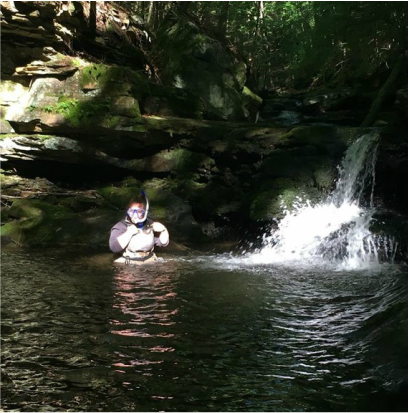 Waders..sweatshirt...snorkel? You guessed it, I got completely wet after this quest. Waders..sweatshirt...snorkel? You guessed it, I got completely wet after this quest. Last week I was sure the number of dropped tags would slow down. Boy was I wrong. This week we found nearly triple the number from last week. This was frustrating to say the least, but we went on a warpath trying to physically see every tag to confirm that it was on a fish. The lower flows have been great for seeing into some pools, but the stream bottom still remained difficult to see in the deeper pools and riffles. So, despite my facetious remarks when I started this project, this week I donned a diving mask and snorkel and sought to touch every tag in the stream. I couldn’t get to many tags that were deep and under rocks, but I did get a “fish eye view” of most. Some were indeed drops, but more often than not I would see an antenna poking through the rocks and when I attempted to gently tug on it a brook trout would lunge at my face. So, I can confirm that many of the tags are still alive and well. It’s hard to say why these tags are dropping. We know for sure that some are predation events. We found one tag about 15 feet from the stream buried several inches in tree roots and with little bite marks all over the tag and a frayed antenna. There was another tag that migrated several miles downstream in 48 hours and was located on a hillside (birds are likely suspects for that one). Tags could also be dropping because, as flows decrease, fish are spending more time swimming between rocks and into tight spaces where the antenna may be getting snagged in tight crevices. Finally, tags could have dropped a long time ago and we are just now finding them. All three of these explanations are likely equally responsible for the drops we found this week. But, for the tags that are still in fish I can tell you a few things. First, they continue to move. Nowhere too far or unusual yet, but some movements have required the fish to traverse some rather rough terrain (as my knees can attest).
Second, anglers are catching them and by in large putting them back. I’m fortunate that this project is taking place in a watershed that not only supports the research, but is genuinely interested in helping achieve the results. This project not be possible without the field and logistical support, but also the backing from anglers who not only are not releasing tagged fish but are also genuinely interested in the study and stop to ask me questions when they see me on the water. It also makes the project a lot more rewarding to know that there is so much local interest in the study.
4 Comments
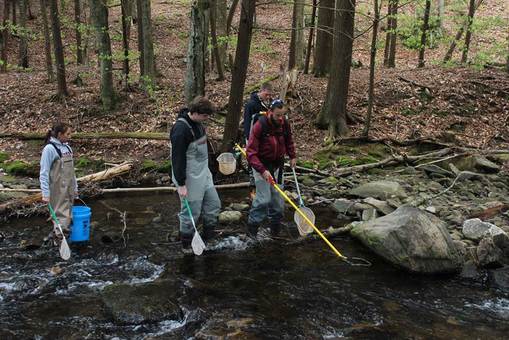 The electrofishing crew searching for brook trout. The electrofishing crew searching for brook trout. We have been tracking tagged brook trout for about three weeks and officially surpassed the 500 detections milestone. This means that we’ve already documented every fish’s location about five times. We’ve seen some movement, but you’ll have to check back to learn more about that. This week was a great reminder that the best qualifications for field work are patience and adaptability. We had a hard time finding some fish, lost a few to some sort of predation, and potentially even a few gone to angler harvest. Stream flows also decreased quite a bit allowing us to access deeper pools and see the stream bottom more clearly. Unfortunately, this also allowed us to find more tags that were dropped. Dropped tags are problematic for several reasons. The most obvious is that a dropped tag is no longer collecting data and becomes a $300 research souvenir. But, dropped tags can also make for messy data analysis. At the end of the study there will be tags that don’t move very far and I’ll have to decide whether it’s a fish that didn’t move or a tag that was dropped and sitting on the stream bottom. So, as disappointing as it is to find dropped tags, it would be worse to have not found the tags and incorrectly assumed it was still a fish. The other positive is that we recovered these tags fairly early in the field season, and so there is still plenty of time to collect data. So, we shuffled the schedule, worked long past quitting time, and got the tags swimming again in fish. This also gives me a chance to discuss the tagging process. As I’ve mentioned, it is a surgery and we borrow many of the techniques from medical school training websites and videos. But, it all starts with a procedure dear to all fish biologists….electrofishing. Putting electricity into water isn’t typically recommended, but decades ago fish biologists found out that, with proper training and protective gear, it is an effective way to temporarily stun fish allowing them to be sampled non-lethally and returned to the stream without harm. While one crew is electrofishing, another crew readies the processing station. When a fish is caught, it is taken directly to processing where it first gets anesthetized and then weighed and measured. From there, we take tissue samples for genetic analysis. Different tissues give different pieces of information (I’ll explain that in a later post) and we take a clip from the tail fin, four filaments from the gills, and a blood sample. At this point, the tagging process begins. The fish is turned upside down in a surgical board, a tube with flowing water is inserted in the mouth to allow the fish to “breath,” and the stomach is sterilized with iodine. A ½ inch incision is made in the abdomen, and a curved needle is placed in the incision and poked through the side of the fish. The tag antenna is threaded into the needle and then the needle, with the tag antenna, is pulled through the side of the fish. The body of the tag is then placed into the abdominal cavity. From here, the incision is closed with two non-absorbable sutures. We use non-absorbable so that there is no question that the incision heals before the sutures fall out. After the surgery is complete, fish are allowed to recover for several hours in net pins placed in pools in the stream. They are then returned to approximately the same location in the stream that the came from and, with any luck, they become roving data points for four months. Looking ahead, summer stream flows are approaching, and so it will be interesting to see how fish respond. I’m hoping for fewer drops and a return to uneventful tracking. But, it’s all up to the fish now. 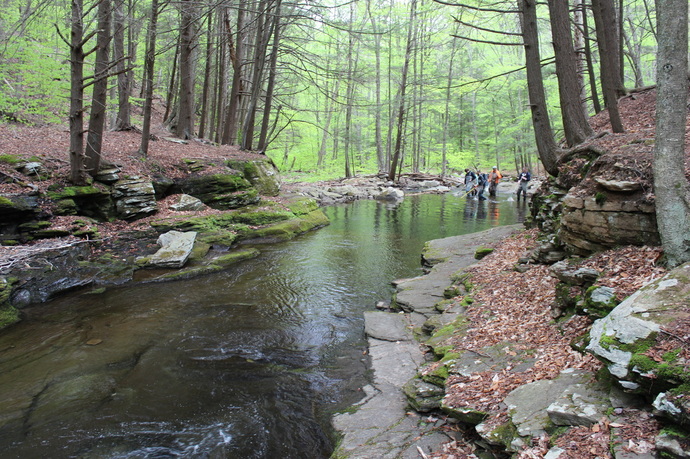 "Stream prettiness" wasn't a factor I considered when picking study sites, but it worked out in my favor. "Stream prettiness" wasn't a factor I considered when picking study sites, but it worked out in my favor. The answer to that question is that I’m not entirely sure (see the previous research section for why there is confusion). But, this summer I started an eight month study of brook trout movement patterns in the Loyalsock Creek watershed in Pennsylvania to help determine the answer. I’ll be providing regular updates on this project through this blog, but, before I begin, let’s talk a little about the methods I’m using. I’m studying movement patterns using radio telemetry. This process involves surgically implanting a small tag (0.0005 pounds) inside the abdominal cavity of a fish. Attached to the tag is a thin antenna wire that is passed through the abdominal wall and remains outside of the fish. Radio telemetry is a fairly common method for studying movement in a variety of fish species. So, if you ever catch a fish with a wire hanging out from its side, there’s a good chance its part of a radio telemetry study (and the researchers would be very grateful if you put it back!). Every five seconds the tag transmits a signal that can be picked up by a receiver. Researchers either mount stationary receivers in locations of high movement or, in my case, walk around with the receiver and an antenna in search for signals coming from tags. When a signal is picked up, the receiver reads out two important pieces of information:
This summer we tagged 103 brook trout with radio telemetry tags. These fish are spread out across four streams, and we track each individual about twice a week to see how changes in stream flow or temperature may trigger fish to move. The battery life of the tags is about 150 days, so I am planning to track summer movement into August, and then tag an additional 60 fish in late summer to monitor fall spawning movement. The prediction is that low stream flows and high temperatures in summer with limit movement. But, come late September, fish will begin moving to access spawning habitat. Previous studies have shown that some trout can move over 3 miles to spawn, so needless to say I didn’t renew my gym membership for the fall. The telemetry tagging was just one part of the data that I am collecting this summer. Stay tuned to hear about why (and how) we draw blood from fish, why I know some fish are shy, and how I build a trout's family tree. Thank you for visiting The Troutlook. The goal of this website is to provide a location for fish enthusiast to learn about the ecology of brook trout, conservation initiatives for the species, and current research developments. We strive to give you the "short and sweet," by removing the confusing lingo and answering the questions you are most curious about.
This website is in early stages of development, but please check back often for updates. Once running, we hope to provide weekly blogs and updates. Until then, please follow us on Facebook or Twitter to stay up to date. |
AuthorShannon White Archives
October 2018
Categories
All
|
The Troutlook
A brook trout Blog
Proudly powered by Weebly
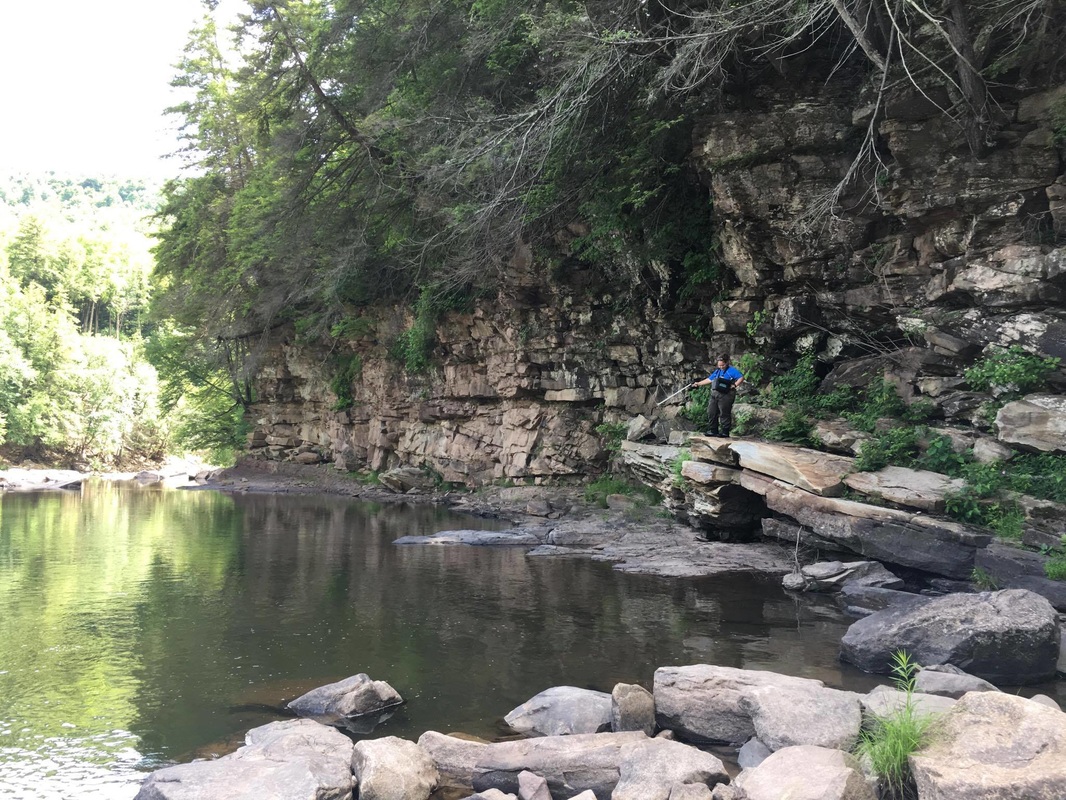
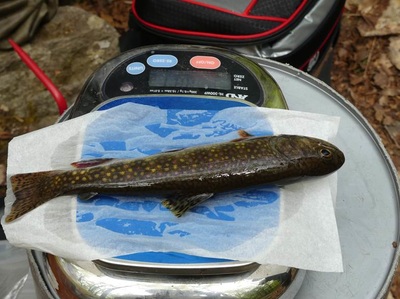
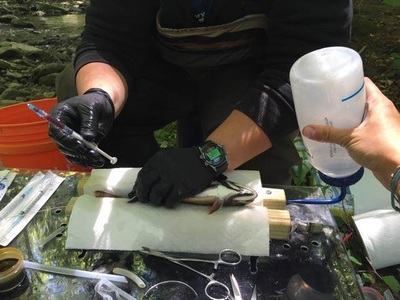
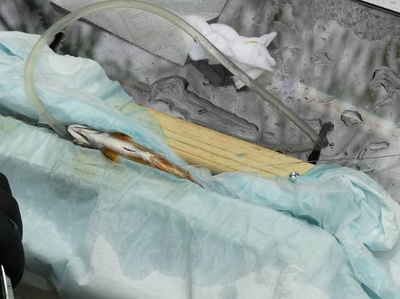
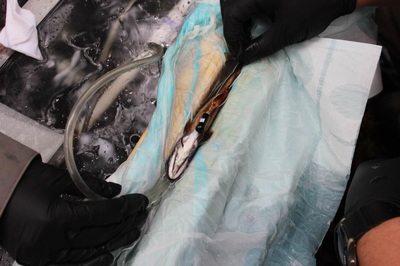
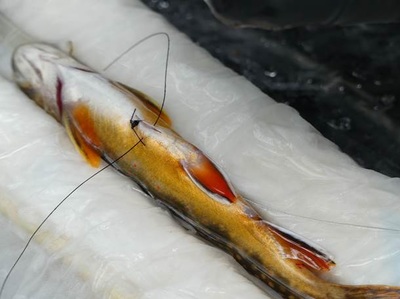
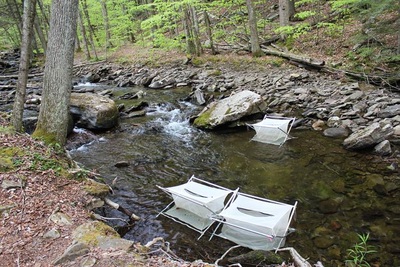
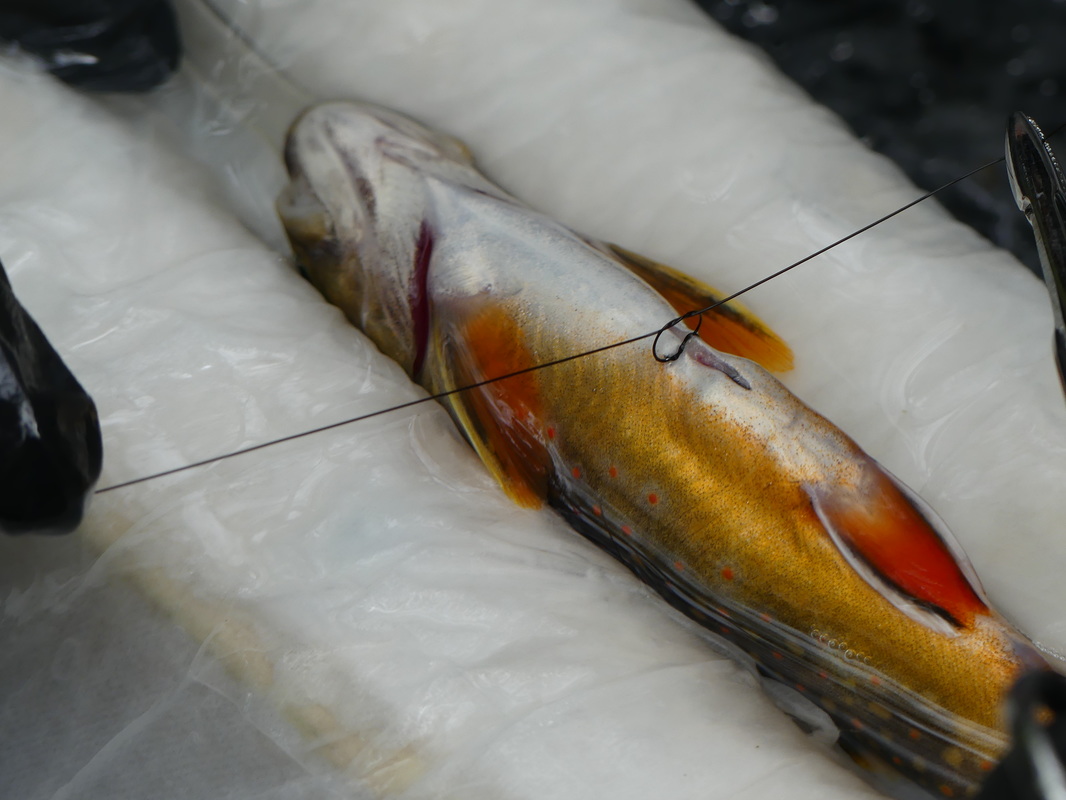
 RSS Feed
RSS Feed